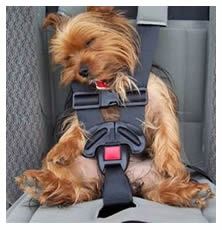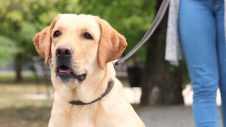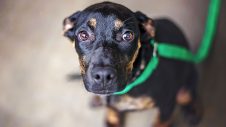With the festive season upon us, our minds turn to a relaxing holiday. Our team of veterinarians have collated some tips on travelling with family and pets and enjoying your holiday together.
There are oodles of things to think about and pack when you’re preparing for a holiday – children, towels, clothes, food and toy supplies… and then there’s the family pet. If you’re lucky enough to find a holiday rental property that accommodates the latter, here are a few tips that’ll help things run smoothly.
- Ensure that your pet’s microchip and contact details are up to date in case they wander off.
- Research your destination. You need to know if there is secure fencing at your accommodation as well as access to dog-friendly spots (beaches, parks, walking tracks). Try websites such as holidayingwithdogs.com.au and tourist information websites. If you’re the thorough type, ring your holiday destination’s local Greencross Vet for the ‘low-down’.
- If your pet requires a specific diet or medication take enough for the holiday and a little bit more.
- Keep up to date with heartworm and paralysis-tick prevention. If you’re unsure what’s required or if your pet is due, consult your local Greencross Vets.
- Long car trips with children require a range of strategies – DVDs, games, toys, books and snacks, to name a few. Road trips with pets demand similar strategies and it’s worth the effort to be prepared!
A major issue when travelling with pets is motion sickness. Strategies for dealing with this include:
- Don’t feed for approximately 4–6 hours before travel
- Factor in short breaks to allow pets (and owners) to stretch their legs
- Ensure there is fresh air (an open window or air vent)
- Be mindful of loud music – what’s loud to them is not necessarily loud to us.
 If you can, get your pet used to being in the car before the trip. Anxiety is one of the main causes of car sickness in pets. Symptoms include drooling, panting, yawning and, at worst, trembling. If your pet displays these signs when in the car, allow them time to become familiar with their surroundings. Spend time with them inside the vehicle while it’s stationary. Once they feel relaxed in the car, take them on very short trips, say around the block, before progressing to longer journeys. During this ‘conditioning’ process reward them for calm, relaxed behaviour.
If you can, get your pet used to being in the car before the trip. Anxiety is one of the main causes of car sickness in pets. Symptoms include drooling, panting, yawning and, at worst, trembling. If your pet displays these signs when in the car, allow them time to become familiar with their surroundings. Spend time with them inside the vehicle while it’s stationary. Once they feel relaxed in the car, take them on very short trips, say around the block, before progressing to longer journeys. During this ‘conditioning’ process reward them for calm, relaxed behaviour.
If these suggestions don’t work or you need a faster solution visit your local Greencross Vets about homeopathic remedies or sedation medication for anxiety. For pets that are extremely sensitive to motion sickness, effective anti-nausea medication is available, generally with a consultation, from your local vet.
Finally, make sure your pet is adequately restrained. We wouldn’t dream of driving anywhere without our seatbelts on and it should be the same for our pets. An unrestrained pet is a distraction to the driver and during an accident can become a dangerous projectile causing severe injury to both the pet and other occupants of the car. Cats and small dogs should be in cages while medium and large-breed dogs should have a secure harness that attaches to a seat belt. All animals should remain in the back seat or cargo area if you have a wagon and shouldn’t be allowed to stick their head out of the window, as charming as it may be.

 Greencross Vets
Greencross Vets 




